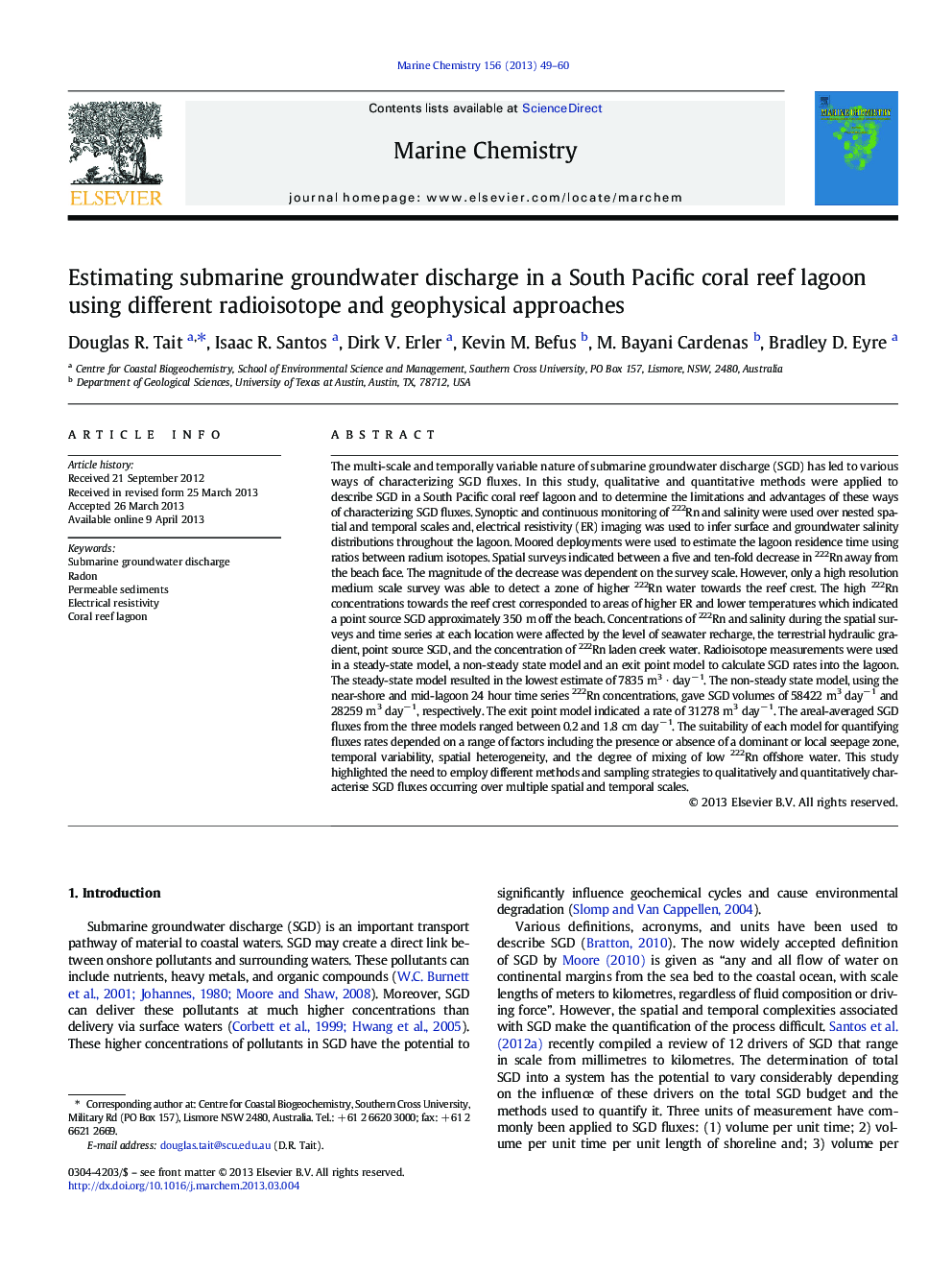| Article ID | Journal | Published Year | Pages | File Type |
|---|---|---|---|---|
| 1261315 | Marine Chemistry | 2013 | 12 Pages |
•Spatial and temporal scale dependent patterns of SGD were shown in a coral reef lagoon.•The scale and resolution of different radon surveys showed different spatial patterns.•Different radon mass-balance models showed a ~ 8 fold difference in flux rates.•To describe SGD it is necessary to develop a multi-technique and -scale approach.•The right method for delineating SGD depends on the influence of hydrological features.
The multi-scale and temporally variable nature of submarine groundwater discharge (SGD) has led to various ways of characterizing SGD fluxes. In this study, qualitative and quantitative methods were applied to describe SGD in a South Pacific coral reef lagoon and to determine the limitations and advantages of these ways of characterizing SGD fluxes. Synoptic and continuous monitoring of 222Rn and salinity were used over nested spatial and temporal scales and, electrical resistivity (ER) imaging was used to infer surface and groundwater salinity distributions throughout the lagoon. Moored deployments were used to estimate the lagoon residence time using ratios between radium isotopes. Spatial surveys indicated between a five and ten-fold decrease in 222Rn away from the beach face. The magnitude of the decrease was dependent on the survey scale. However, only a high resolution medium scale survey was able to detect a zone of higher 222Rn water towards the reef crest. The high 222Rn concentrations towards the reef crest corresponded to areas of higher ER and lower temperatures which indicated a point source SGD approximately 350 m off the beach. Concentrations of 222Rn and salinity during the spatial surveys and time series at each location were affected by the level of seawater recharge, the terrestrial hydraulic gradient, point source SGD, and the concentration of 222Rn laden creek water. Radioisotope measurements were used in a steady-state model, a non-steady state model and an exit point model to calculate SGD rates into the lagoon. The steady-state model resulted in the lowest estimate of 7835 m3 ∙ day− 1. The non-steady state model, using the near-shore and mid-lagoon 24 hour time series 222Rn concentrations, gave SGD volumes of 58422 m3 day− 1 and 28259 m3 day− 1, respectively. The exit point model indicated a rate of 31278 m3 day− 1. The areal-averaged SGD fluxes from the three models ranged between 0.2 and 1.8 cm day− 1. The suitability of each model for quantifying fluxes rates depended on a range of factors including the presence or absence of a dominant or local seepage zone, temporal variability, spatial heterogeneity, and the degree of mixing of low 222Rn offshore water. This study highlighted the need to employ different methods and sampling strategies to qualitatively and quantitatively characterise SGD fluxes occurring over multiple spatial and temporal scales.
